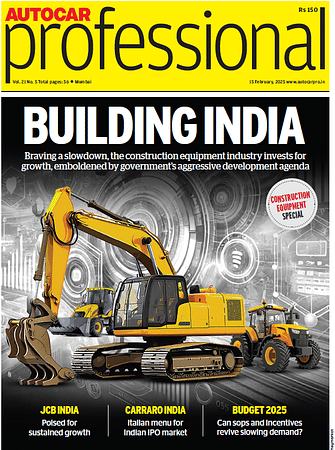Mahindra sells 23,421 passengers vehicles in February, clocks 14 percent growth
Mumbai, March 1, 2013: Mahindra & Mahindra (M&M), which is among the OEMs most affected by the Union Budget 2013-14’s three percent hike in excise duties on SUVs (from 27 to 30 percent), has announced an 11 percent growth in its total auto sales of 47,824 units during February 2013 as against 43,087 units in February 2012.
Mumbai, March 1, 2013: Mahindra & Mahindra (M&M), which is among the OEMs most affected by the Union Budget 2013-14’s three percent hike in excise duties on SUVs (from 27 to 30 percent), has announced an 11 percent growth in its total auto sales of 47,824 units during February 2013 as against 43,087 units in February 2012.
The passenger vehicles segment (which includes UVs and the Verito) posted growth of 14 percent, having sold 23,421 units in February 2013, as against 20,573 units during February 2012.The company’s domestic sales stood at 44,399 units during February 2013, as against 40,461 units during February 2012, an increase of 10 percent.
Meanwhile, M&M’s 4-wheeler commercial segment which includes passenger and load vehicles registered a sale of 15,167 units, while the 3-wheeler segment sold 4,803 units in February 2013. Exports in February 2013 stood at 3,425 units.
Commenting on the Budget, Pravin Shah, chief executive, Automotive Division, said: “Levying a 3 percent higher duty on SUVs on the basis of higher ground clearance is disappointing as it slows down further growth and does not provide equal competitive space to all players.”
RELATED ARTICLES
JSW MG Motor launches Comet EV Blackstorm edition
The key highlights of the Comet EV Blackstorm, which is now the top-end variant, are its ‘Starry Black’ exterior along w...
Maruti Suzuki begins production at new Kharkhoda plant
Phase 1 of the Kharkhoda plant will have an annual production capacity of 250,000 units and produce the Brezza compact S...
Eurogrip aims for price parity with ICE in low rolling resistance tyres
With its two-pronged approach that focuses on optimising energy consumption in the manufacturing process of low rolling ...





 By Autocar Pro News Desk
By Autocar Pro News Desk
 01 Mar 2013
01 Mar 2013
 3096 Views
3096 Views







 Ajit Dalvi
Ajit Dalvi


